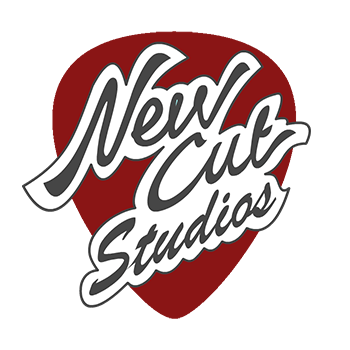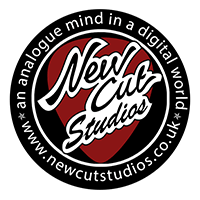Do you have Sweet Dreams about re-inventing yourself?
Super 8:
Episode 2.
Art-Pop made on state of the art equipment, with pristine production in a top-flight studio and at least 24 record tracks to play with - how else could you lay down an album as futuristic, or as momentous, as
Sweet Dreams (Are Made Of This) in 1982? Well, in reality, Eurythmics recorded everything themselves, mostly in a large attic, on an 8-track tape machine with some old keyboards, an experimental drum machine and a whole lot of ingenuity. You see Dave Stewart had been paying attention in Germany the previous year, when Conny Plank of Kraftwerk and Neu! renown was producing Eurythmics’ debut album
In The Garden — with considerable input from Holger Czukay of that other great Krautrock band Can. Lennox & Stewart had worked with Conny Plank before, with their previous band The Tourists, who recorded their self titled debut album at his studio in 1979. Whilst recording
In The Garden both Czukay and Plank encouraged Stewart to ‘bend the rules’ of accepted studio practice and be more experimental with recording techniques. But then Eurythmics was always intended to be more than just a pop band. Right from the start Lennox & Stewart had described their new venture as a multi-media art experiment. In 2018 Lennox remarked on where their priorities lay when they started their project: “In the Garden is an unorthodox, experimental record, which could easily be described as avant garde. We were always trying to push boundaries and explore new approaches to creating sounds and musical styles. The only challenging part of not having commercial success, was how to survive long enough to record another album, as we were pretty strapped for cash in those days” (Super Deluxe Edition, 6th July 2018). Struggling artists they were, but thanks to a sympathetic bank manager they got a loan of £5000 to set up their own home studio. And while they didn't describe themselves merely as a pop band, they went on to produce a perfect pop song.
“Man machine, power line”
Other important contributors to that first Eurythmics record included Karlheinz Stockhausen’s son Markus, Blondie drummer Clem Burke and Czukay’s Can cohort Jaki Liebezeit — surely the best surname for a drummer ever?* Dave Stewart had this to say of the experience: "Conny and his partner Holger took me aside one day to show me what they were doing - all these weird, obscure experiments… and these were forty year-old men! They were like kids with paint pots and a blank canvas, they could do anything." This impetus to creative joy was manifested on Eurythmics’ next album in a truly creative approach to sound design. While they had experimented with electronica for
In The Garden, it was a record still very much rooted in ’70s song writing. For their second album as a duo Lennox and Stewart would make a more radical statement. It hasn't even got a verse. That incredible title track, a single that swept around the world like a disco tsunami, includes such state-of-the-art digital synthesizers as tuned milk bottles and an old ‘60s Farfisa Compact organ put through a spring reverb. And the recorder? When I started researching this article, I read that it was all done on a Tascam 58-8, to analogue 8-track ½” tape, with a final mix down to a Revox B77. We like to record to ½” 8-track analogue tape as well, here at New Cut Studios, and our recorder of choice for tracking is an Otari MX5050 machine.
Reading around a bit, it seems TEAC’s 58-8 didn’t come out until 1983 and 'Sweet Dreams…' was completed in 1982. The TEAC 80-8 would seem to be the most likely Tascam Series candidate for the Eurythmics to have used for tracking. And it was a tape machine very much on a par with the Otari MX5050 that was the subject of Episode 1 — though I have read that the Otari has the edge when it comes to recording drums because of it’s tight low-end response. We have used our MX5050 for tracking drums many times and the results have been superb, especially when put through our Shadow Hills GAMA 8 mic pre. The very first tape recorder to come out of the humble TEAC shop near Tokyo bay was the TD-102 — it was pretty much a smaller (and more to the point cheaper) copy of the Ampex 300 we also talked about in Episode 1. So while the Tascam 58-8 did not arrive in time to record
Sweet Dreams (Are Made Of This), the Tascam 80-8 had already become a popular writing tool in the Seventies. Groups such as The Eagles, The Doobie Brothers, Boston and Kansas, all endorsed it in the pages of the the music gear mags of the time. If your band had the money to buy more than one machine for home use, it was a great way for musicians to write & record, share tapes and contribute to demos. By 1979 the TEAC Corporation of America were advertising the Series 80-8 as “the most popular 8-track multichannel recorder in the world”. I wonder if some of that popularity was down to the truly phenomenal success of a little movie by a guy called George Lucas. Because in 1978 TEAC had already advertised in the trade press that the Series 80 “was used in the production of
Star Wars’ special sound effects—lasers, light sabres, starships and the voices of C3PO and R2D2”.
‘Somebody Told Me’
Popular mythology asserts that in creating the voice of R2-D2, sound design pioneer Ben Burtt used the Oberheim OB-1 monophonic synthesiser and we also have an original 1978 OB-1 here at New Cut Studios (see photo at the end of this article). Legend even has it that Obi-Wan Kenobi’s name is a homophonic derivation from OB-1, but since Star Wars hit cinemas in May 1977 and the OB-1 wasn’t released until ’78 it seems unlikely that either of these attributions are correct. Its probably an urban myth, maybe someone spotted the Club Obi Wan sign on the nightclub awning at the start of
Indiana Jones And The Temple Of Doom, and took the idea a little too far. Perhaps the new Disney+
Obi-Wan Kenobi series will reveal something of the Jedi master’s teenage years as padawan to Raymond Scott at Manhattan Research. Oft repeated with more authority, however, is Burtt’s application of an ARP 2600 to vocode his own voice in the creation of R2-D2’s expressive characterisation. I can’t find any info online about what gear was used to record the somewhat flanged & delayed voice of C-3PO, but their endearing, squabbling relationship was initially tracked on a Series 80-8. Moving forward a few years to 1982, the OB-1 was often identified as a prominent instrument on the song ‘Sweet Dreams…’ but that may be another muddled anecdote.
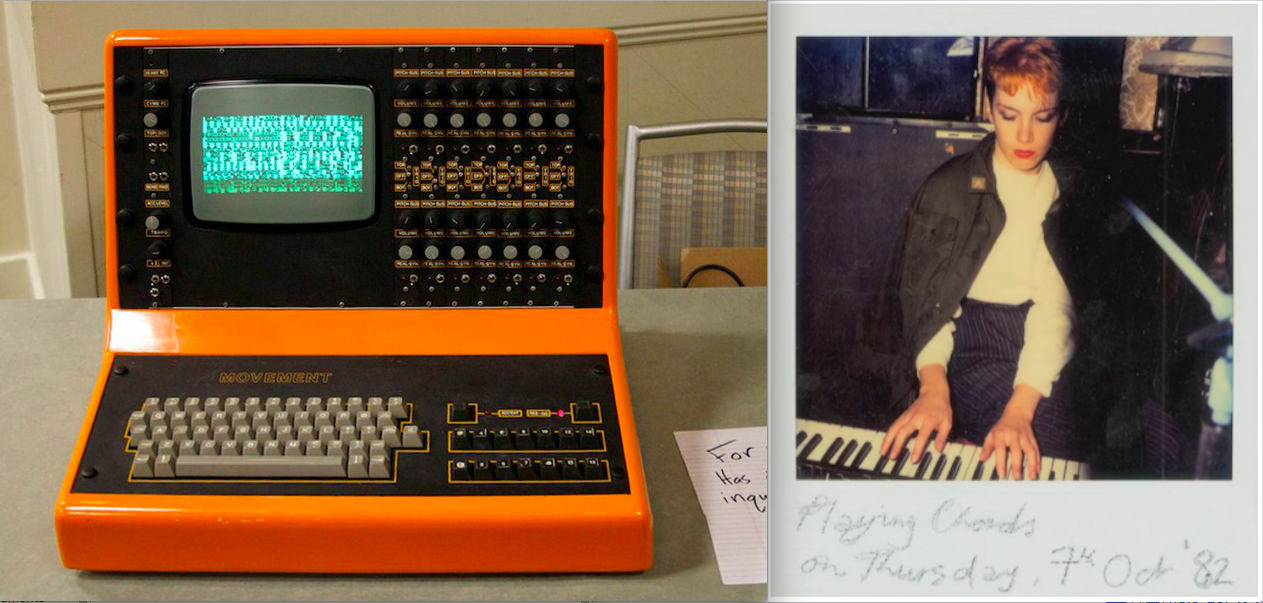
Dave Stewart once said that the synth top-line was partly played on the OB-1’s polyphonic big brother, the OB-X which Oberheim debuted in 1979. On that occasion he said the main riff was comprised of that part played by Annie Lennox on top of a part sequenced on an SH-101 from a prototype drum computer called the Movement Drum System. Unless you believe it was more prosaic: like an SH-09 run from a CSQ-100. Unfortunately we can’t rely on Stewart himself for a definitive list of ‘what synths, used where’ on their devastating disco floor-filler. In the years immediately following Eurythmics breakthrough he probably wasn’t all that keen on having his unique arrangement aped and as the years went by he appears to have compounded early disinformation with unreliable recollection. Either way the debate on keyboard forums continues to be contested to this day. Did they use a Juno 6 or a Juno 60? They definitely had a Juno 60 by the time they were upstairs in the church because it appears in some B&W photos from about 1984. There are endless opinions out there, believe me. What sounds exactly like a slightly detuned 2-oscillator OB-X patch to some, sounds just like a Juno 6 with the chorus on to other keyboard experts. Anecdotal references have been made to Dave Stewart borrowing various Oberheims, Rolands & Prophets from The London Rock Shop — which was a small music store situated on Chalk Farm Road, near The Roundhouse and very close to the Eurythmics first studio. The most useful source I found about the making of this ground breaking banger is the July 2018
Sound On Sound ‘Classic Tracks’ article, which is fairly comprehensive and to a good journalistic standard, and I refer you to that. But there are many inconsistencies in Stewarts’ contribution to this article compared to previous accounts. Whether or not Stewart used an OB-X or OB-1 on ‘Sweet Dreams’, he certainly acquired a rhythm component from Oberheim, adding the superb DMX to his arsenal sometime during their move to a bigger studio in 1983.
The very earliest Eurythmics endeavours in electronica came from a very basic set-up indeed. In 1980 while The Tourists were imploding as a band on tour, or so the story goes, Dave Stewart was holed up in a cheap hotel, messing around with a Wasp in Wagga Wagga, NSW. While his life as one of The Tourists was nearing it’s end, his life as a professional tourist would soon go supernova. Once he got back from down-under he started running that little Electronic Dream Plant mono-synth with EDP’s Spider sequencer into a TEAC 144 Portastudio — the original compact cassette, home multi-tracker**. Stewart soon added a Roland TR-606 Drumatix to his portable studio and some of these early experiments ended up on
Sweet Dreams (Are Made Of This). The EDP Wasp was first offered for sale in 1978 the same year as the OB-1, but for a lot less money and Dave Stewart allegedly bought his from Rod Argent’s Keyboards. It was a cool sounding little instrument and it was one of the compact noise makers that helped democratise synthesis in the post punk electro boom — but it was definitely a budget synth and it’s conductive “keyboard” was prone to false triggering. In some ways however, it was quite advanced: as an early digital hybrid, it’s analogue filtering & envelopes coupled with two digital oscillators made it’s tuning very stable compared to most Seventies synths. For most of the recordings he used it on, Dave Stewart actually mic’d it’s small built-in, 4” x 2” oval speaker — though he may have sometimes combined that with it’s line-out.
Stewart has said that his favourite synth at the time (and the one he kept going back to) was the Roland SH-09. And as already mentioned Eurythmics soon added an even more popular, working class mono synth from Roland — the classic SH-101. Their modest 606 beat box was also supplemented with the far more flamboyant Movement Systems Drum Computer. Built in Bridgewater, Somerset, it was not a cheap bit of kit when it was released in 1983 with a list price of £2000. I mean, it was two fifths of Eurythmics’ entire studio budget. Stewart actually bought one of the prototypes in ’82, driving down to get the thing and sleeping on the floor of one of the guys from Movement Computer Systems while it was being built. The MCS Mk.I that Stewart bought came with a separate TV monitor, but the later Mk.II came housed in a bright orange case that looked like a home business machine complete with cathode ray tube. The Movement combined analog synthesised and 8-bit sampled percussion sets, but true to form Eurythmics used it in unorthodox ways to trigger all kinds of sound generators to create true dance floor devastation for 'Sweet Dreams'. It was also used as a much discussed prop in the striking video that added to the song’s impact on pop culture in the early Eighties. The MCS was run from the sync track on the TEAC 80-8 (you have to remember that only 7 tracks on the Tascam were used for audio) and recorded straight to the Revox on mix-down.
As mentioned earlier, Kosmische Kommandant Konrad Plank had previously produced the first albums by The Tourists in 1979 and Eurythmics in 1981. Known simply as Conny’s Studio, Plank set up in 1974 just east of Bonn and Cologne in Neunkirchen (isn’t that German for Nine Churches? what is it with studios and churches?). The facility was centred around a 56 channel desk that he built himself along with Peter Lang and Michael Zähl. Before long it was a legend of note to have "recorded in Conny's Studio by Conny Plank”, or something similar on the back of your record. The sleeve notes to the Eurythmics’ debut say it was “Recorded at Conny's studio, Cologne between February 81 & June 81”.
In The Garden was engineered by Dave Hutchins, who Plank had lured away from the old Island Studios in 1977 with the help of Brian Eno — another playdate regular at Conny’s kindergarten. Built by Chris Blackwell at the end of the ’60s in a 17th century church at the corner of Basing Street & Lancaster Road, Island Studios played an amazing part in the history of popular music. In 1973 Island Records moved their offices out of the building (but retained ownership), when it got renamed Basing Street Studios under Muff Winwood, and then in 1980 it became Sarm West under Trevor Horn. Before being converted to a recording studio in 1969, the building was yet another former church, that had been used by Madame Tussauds as a workshop and store room for dummies, after being deconsecrated. It had been desecrated by even more dummies by the time the recording of ‘Do They Know It’s Christmas?’ was made there in 1984. By that time Dave Stewart was building his own studio in another church in North London. Here’s a history of the Island studios made for
BBC Radio 4.
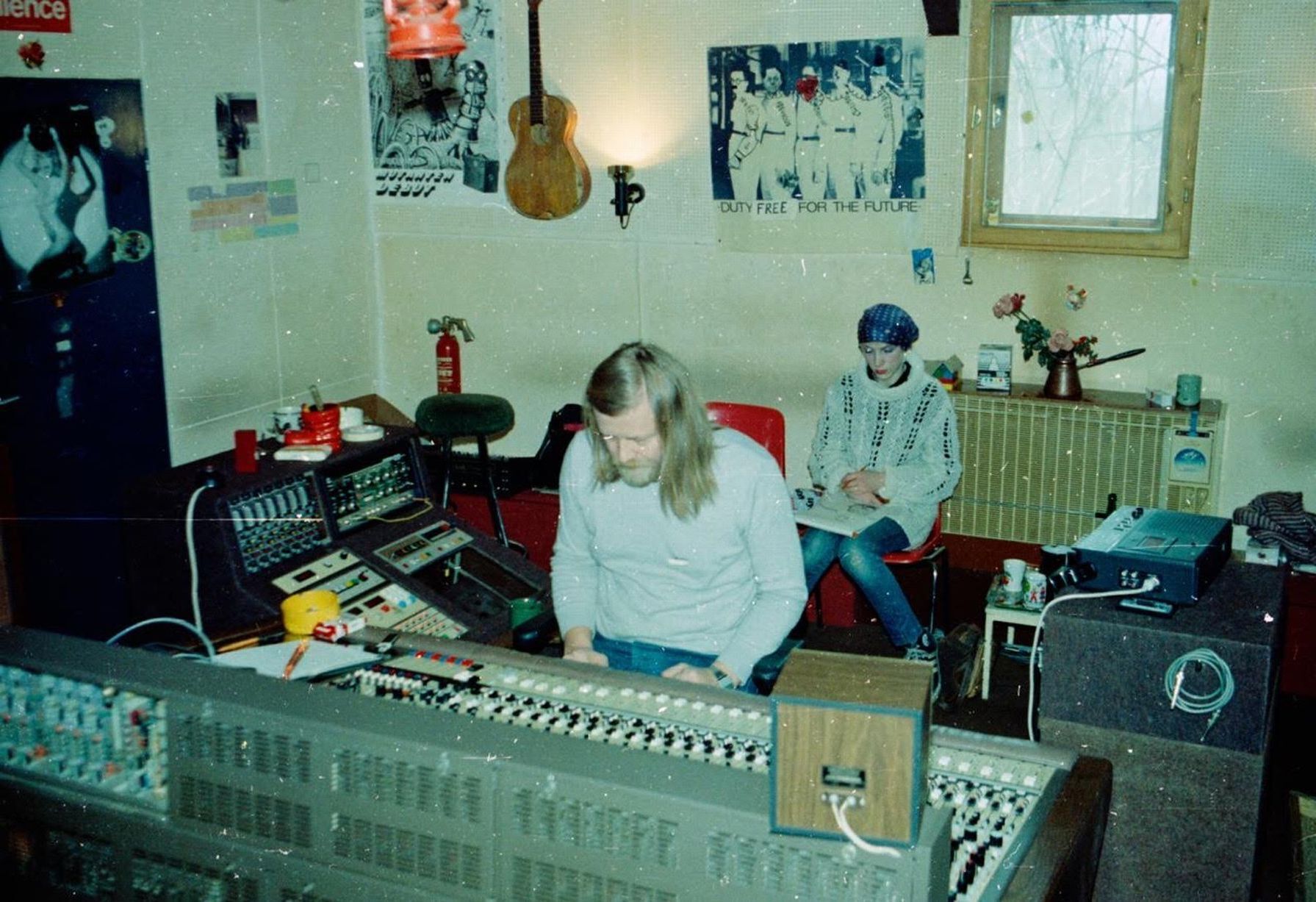
But when they started making their second album Eurythmics would have none of the luxuries afforded by studios like these. They started to record
Sweet Dreams (Are Made Of This) on the attic floor of an old warehouse, where they were living at the time, above a picture framing business in Chalk Farm, North London. With the five grand bank loan, Annie Lennox and Dave Stewart set to building a basic studio on the top floor in what could be described as a dingy arrowhead of an attic. The only reason there is a grand piano on that album is that the guy who ran his business out of the floor underneath theirs was a keen pianist and liked to practice at work between making picture frames. Supposedly he gave them permission to run long cables down there after business hours and plug in a pair of Beyer M201s (the only mics Eurythmics owned at the time). Foldback for the piano session was very rudimentary apparently, as was illumination: all the parts were recorded by torchlight. Their V-shaped live room was the control room — was their living room — with no acoustic treatment at all. All their audio was routing through an old Soundcraft Series ii desk, hardly up to the minute or up to speed. And their outboard didn’t exactly motor: aside from the stereo spring reverb already mentioned their only other artificial atmosphere came from a Roland RE-201 Space Echo. Possibly the only outside input the duo had in setting up their attic and starting to record was from former Selector bass player Adam Williams. Continuing the Two Tone tint, the only other musician I found mentioned as a contributor was some time Specials trumpeter Dick Cuthell.
‘Reality Effect’
Most of the technology they had was pretty lo-fi: we’ve already mentioned the ’60s Farfisa Combo Compact organ and water-filling milk bottles to pitch is about as home-made as you can get. The Oberheim was obviously a sophisticated bit of kit, but was already 3 years old in 1982, at a time when the acceleration of synth evolution was stratospheric. Limited resources were only one reason for their inventive approach to sound design. As well as the aforementioned milk bottles, for the song ‘This Is The House’ they whipped a clothesline against a wooden door to simulate a Simmons Claptrap. A chef’s grunts were recorded and used for the rhythm track of ‘Love Is A Stranger’. Train brakes squealing, mixed in with slide guitar, create a voice in ‘The City Never Sleeps’. “I really wanted to play something at the beginning of ‘Jennifer’, where the sound of the sea comes in. I wound up banging these two funny sticks from a picture frame” (Keyboard, December 1984, p.52, cover story ‘Dave Stewart: On Eurythmics’). Experimenting with found sound and studio electronics was not a casual caprice for The Eurythmics but a fully developed approach inspired by mischievous mentors. In the July 2018
SOS Stewart describes the efforts he would go to for the sound he wanted: “For handclap sounds we would just get something like an open hi‑hat from the drum computer and then stand around the mic and clap and send those into a [Electro‑Harmonix] Big Muff fuzzbox pedal, with the least amount of fuzz possible. Then I’d mix it with the original recorded sound to try and create a clap that sounded a bit white noise‑y.” We have several Big Muff pedals at New Cut Studios, but I think the next episode of our 8-Track blog will be the best place to talk about them in more detail.
Actually not all of the song ‘Sweet Dreams…’ was recorded in the Chalk Farm attic. There you go, if we’re going to talk about obstacles to creativity, why not throw losing your studio into the mix? It was still 1982 and their second album wasn’t finished when they lost the space above the picture framers — along with the grand piano. They soon found a new home thanks to
Trumpton and
Captain Pugwash animators Bob Bura and John Hardwick, who owned a church in Crouch End built in 1855 by a dodgy Christian sect called the Agapemonites. The two film makers used most of the ground floor of the church as their studio — and initially Hardwick & Bura let Eurythmics use the ground floor cloakroom rent free — before asking them to move into a bigger space, which their new Landlords even helped to build. Stewart would later buy the building off them in 1984 and The Church Studios would take it’s place in recording history (including hosting Bob Dylan), before David Grey bought it in 2004 and in 2013 the studio was bought by Adele producer Paul Epworth. My old mate, the mastering engineer Marc-Dieter Einstmann worked there as engineer & tape op in the late ‘80s with Depeche Mode, by which time it was already becoming one of the worlds famous studios.
“Their A&R man said, 'I don't hear a single’ ”
Issued in June 1982 as the second single from an album that still had the working title Invisible Hands ***, ‘The Walk’ was one of those songs where Stewart had transferred some of its parts directly from the TEAC Portastudio onto the Tascam eight‑track tape. “You only had seven tracks,” he says, “‘cause track eight had timecode. ‘The Walk’ has got me playing the bass line on a Roland SH‑101, and then there’s all these vocals and a trumpet solo by Dick Cuthell who was playing with the Specials. It has a lot of things going on, on seven tracks. It’s got about 36 things... you would need a 48‑track really. But you had to sort of decide and bounce them on the spot… So now we had a very basic thing — Tascam eight‑track, a Bel noise reduction unit which I used to use compress Annie’s vocals by switching it in and out on the vocal track. Then a Roland Space Echo and a Klark Teknik [DN50] spring reverb which we kind of dismantled and did all sort of experiments with, and a second‑hand Soundcraft desk.” (Sound On Sound July 2018). Most of their gear was second hand, both the Series ii desk and the B.E.L. BC-3, looked like they could have come out of the Radiophonic Workshop’s Room 11 at BBC Maida Vale. After releasing ‘Love Is A Stranger’ as the second single to little notice in November, on the 21st January 1983 ‘Sweet Dreams (Are Made Of This)’ was released as a single. Stewart said that their label RCA didn’t think the song was strong enough. It entered the UK chart at #63 in February, and the rest, as they say, is history.
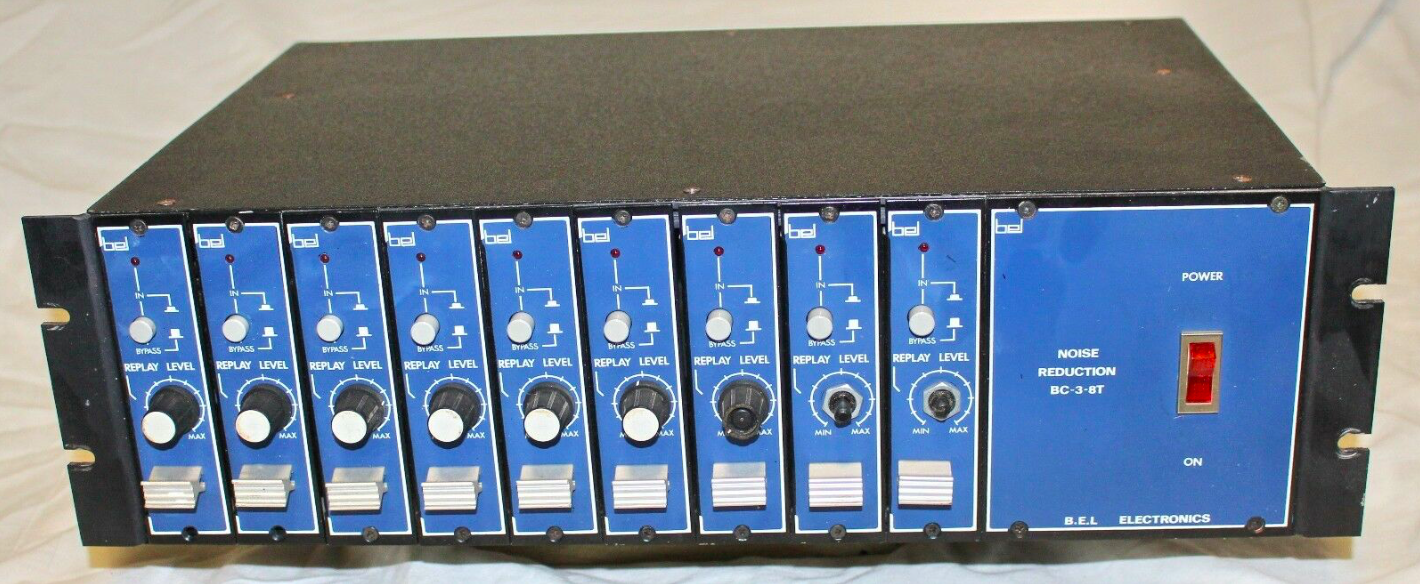
Eurythmics didn’t hang around however, ten months later they released their third album Touch, recorded entirely at their new base in the Crouch End church. I found two great B&W photos of this set-up online, taken I believe after they moved to larger rooms upstairs from the cloak room. By the time these pictures were taken they had a lot more than an 8-track to play with. In the left hand corner of both photos you can see the main recorder labelled merely as “New Soundcraft 24-track”. I’m pretty sure that its a Soundcraft Magnetics 760 2” machine (c.1980) which in turn was later superseded by an Otari MTR-90 II 2″ 24-track. In fact Eurythmics also bought an Otari MTR-12 1/4″ 2-track as their stereo mastering recorder. In the background is a Soundcraft Series ii in it’s 16-into-8 configuration (c.1975); which must have been that first desk from the 5 grand loan to set up above the picture framers. Because of it’s quality and price point the Series ii was a very common desk to match with Otari and Tascam recorders in Europe at the time. There are several more pieces of outboard in evidence in these pictures than were available in the original Chalk Farm attic rooms. Among other units there is what looks like an LC-6 Compressor from Furman and the Space Echo now has an RE-501 Chorus Echo sitting on top of it. Stewart was still using a B.E.L. Electronics BC-3-8T 8-track noise reduction rack: not much use with the 760 24-track you might think, but apparently Stewart mainly used this compander unit as a compressor for Lennox’s vocals. A compander circuit is often used to compress a source for recording to tape and then expand it again on playback; it is thus commonly used to reduce tape hiss in proprietary systems like Dolby and dbx noise reduction.
808 Statements
Only a few things are tagged in the pictures, one of them being “Dave’s famous ghetto blaster”, but clearly labelled are both the Roland SH-09 & Juno 60 that had expanded their synthesiser arsenal at this time. There is also what initially looked to me like a smaller version of the legendary 808 drum machine sitting on top of a 2-U multi-effect rack above the SH-09. Some image googling established that rather than being a TR-808 Rhythm Composer, it is actually a Roland CSQ-100 Digital Sequencer. I found a quote in the December 1983 issue of
Modern Recording & Music where Stewart said “I bought a Roland SH-09 synthesizer with a CSQ-100 digital sequencer…
”. An online search for the CSQ turned up an interview with Dave Stewart in the December ’84 issue of America’s
Keyboard magazine that yielded some more info: “I like the SH-09” he says, “I’ve had it with me on hundreds of jobs; it’s like Old Faithful. And it’s this particular one I love. I’ve used another SH-09 when mine was broken, and it wasn’t the same. I put everything in the same position, and it sounded completely different to my ears. You can get these great little wood block sounds, and that steel drum sound on ‘Right by Your Side’. I used it on the beginning of ‘This is The House’ too, playing bongo sounds.” (Keyboard, December 1984, p.50, cover story ‘Dave Stewart: On Eurythmics’.)
But that multi-effects unit that’s sitting underneath the CSQ wasn’t designed as a piece of studio outboard at all. Unless I’m very much mistaken, it is an Ibanez UE-400 multi effects processor, which debuted in 1980 and it was very much designed for guitarists — which you can usually tell from the 5 button foot-switch strip that it came with. Unfortunately both photos cut off at the bottom just before most of the various effects pedals come into view — though I’m pretty sure I can see the corner of a Boss CE-1 Chorus Ensemble (I own one and keep it at New Cut Studios). The UE-400 had a sister model, the UE-405 which had a different set of sounds so the knob pattern was slightly different. The colour scheme of these units changed from black, to grey & beige at some point. While still in it’s blackface version the Distortion effect was swapped out for an Overdrive; around the same time the stencilling changed from yellow to white. Dave Stewart was of course a skilled guitarist and his UE-400 is clearly black in the photos, but it’s impossible to tell with the resolution of these old images whether it is the Distortion or the Overdrive version. The footswitch brick changed over time as well. The button style of what we’d now call the floor controller is usually the most obvious way to tell the age of the UE-400 units. The first models had the small ‘square button’ Q-1 FET switch of the 1980 Compact series pedals (think TS-808 Tube Screamers), which changed for the larger ridged-cover switches of the 1982 line of effects (think TS-9 Tube Screamers).
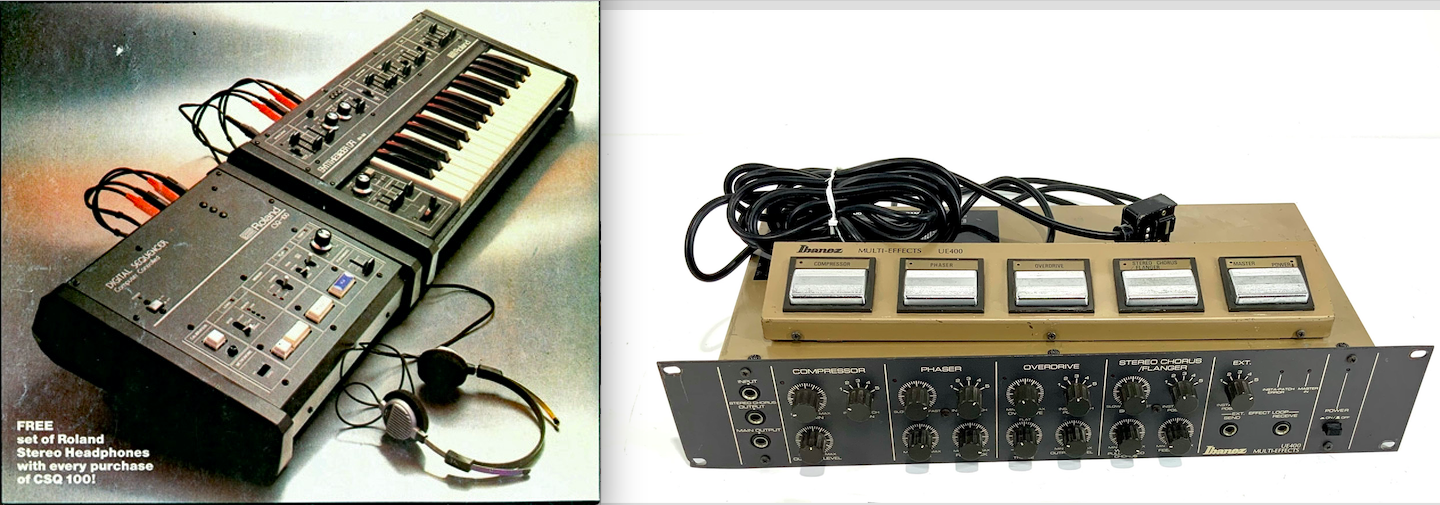
And right there is the source of a certain amount of urban myth. It is often claimed that the mark 2 UE-400s have the classic TS-808 Overdrive Pro inside. Indeed the Mk.4 foot switch got a new label and proudly boasted the words Tube Screamer, though I think the 2U fascia still said Overdrive. People who’ve had a good poke under the bonnet however have a more complicated tale to tell. Part of the myth is down to the fact that old broken UE-racks are a great source for harvesting JRC4558D chips — which are the op-amps the 8 series and earliest 9 series Tube Screamers were built around. The first Distortion version UE-400 had 11 of these much-mythologised op-amps in the various effect circuits. Interestingly for all that, none of the 4558s are utilised in the distortion itself, which used two Toshiba TA7136P chips — the same op-amps that were also used in the first edition Boss DS-1. So a broken original Distortion 400 may also be a good source of chips for the preferred, original spec Distortion 1. However, the Overdrive version blackface UE-400 Mk.2 had all Panasonic AN6552 op-amps and must have been designed so, because the PCB is printed for them. I don’t know what chips the 9 series styled 400s used, they might be different again. But whatever their chipset, the UE overdrive circuits were certainly similar architecture to the Tube Screamer lineage that Maxon gave birth to with the wide box, grass green, Ibanez OD-855 Overdrive II. The preceding Ibanez OD-850 orange OD and the first green ODII in narrow boxes were more Big Muff flavoured fuzzes****.
The UE-400 effects were laid out as Compressor, Phaser, Overdrive, Chorus/Flanger (later Stereo), but they could be patched in any order with the Insta-Patch feature which also applied to the effects loop for any other pedals you were using. Each panel of the control face had a 5-way rotary switch which had to be set to a different number, or the Insta-Patch error LED lit up and you’d get no output. The UE-405 model effects were laid out as: Compressor/Limiter, Stereo Chorus, Parametric Equalizer, Analogue Delay. The 5-way floor switch for the UE racks was connected by a multicore cable, but it was prone to damaged pins on it’s 8-pin block connector. The range also included the more compact self contained Ibanez UE-300 & 305 3-effect floorboards and there were also Maxon branded versions of all the models*****. Given it’s position in the photo sandwiched between the SH-09 and the CSQ-100, it’s likely that this Ibanez rack wasn’t used for guitar at all. Stewart’s resourceful approach to popular music went far beyond his attachment to the electric guitar.
‘Wrap It Up’
Dave Stewart went on to become one of the in-demand producers of the ‘80s & ‘90s. If you want proof of his genius as a hitmaker go listen to something like ‘You Little Thief’ by Feargal Sharkey. When The Tourists split up it might have been the end of everybody’s career, but Lennox & Stewart had worked with people for whom making music was a fun activity as well as creative expression. And as their careers have shown, that can be quite a productive approach. The ingenuity they brought to mixing found sounds with cutting edge technology produced one of the defining pop songs of the 20th century, and they did it on 8-track tape. There aren’t that many instruments on the title track and what they do is in some ways quite minimal. Such simplicity belies it’s genius. So much of the power of ‘Sweet Dreams’ is shaped by the space in the song, both musically and lyrically. It is magnified by the audience’s imagination, just as all great art should be. And so much of that space is shaped by the musical decisions made by Lennox & Stewart recording, indeed composing, to 8-track tape with limited resources and unbridled creativity. “The act of multitrack recording is the act of arranging”, as Quincy Jones is supposed to have said. Here’s something Stewart himself said about his approach to the act of recording:
“One of the secrets to my ability to collaborate with so many other talents is that I take all the pressure away… when I come along and say, ‘Well, you know, it doesn’t really matter if you don’t like it. Nobody will ever hear it. We’ll just throw it away, burn it. It doesn’t make a difference,’ suddenly it’s a whole new world. There is no pressure, and you’re allowed to make mistakes, and you know everything is fine. You don’t have to think everything is precious. When you’re relaxed, great things happen, and you can capture something truly amazing. And this creates momentum, because you use that energy and it leads to more ideas and inspiration. People get excited and it becomes fun. And when you’re having fun making music, it’s infectious, for yourself and everyone around you. And it’s also much nicer for your family when you, eventually, get home.” - Dave Stewart,
Sweet Dreams Are Made Of This: A Life In Music (New American Library; 2016).
* Liebezeit, translating quite literally as Lovetime in German, was an inordinately appropriate name for a drummer who’s robotic time-keeping led to him being dubbed “the human metronome”. Maybe his ‘motorik’ beat was a result of him being the original Man Machine of Gotterdammerock. But of course Jaki Liebezeit wasn’t his real name. When he was born, on the 26th of May 1938, in Ostrau, Mittelsachsen about 50km west of Dresden, he was christened Hans Liebezeit. “Sugar Kane?”, “l changed it from Sugar Kowalczyk.” Incidentally, Clem Burke would go on to play drums with Eurythmics on
The Old Grey Whistle Test in 1981 and during their first UK tour in February and March of 1983.
** You know, if you had the talent then you could do a lot with just a TEAC 144 ‘Sound Cookee’, an Echoplex and a couple of 57s. It’s pretty much all Bruce Springsteen used to make the album
Nebraska. Don Felder has said that the 4-track Portastudio on which he wrote the basis of ‘Hotel California’ was a Tascam Series 144. In an interview with Tom Robinson for Record Mirror in July 1985 Dave Stewart was pictured with a Tascam Series 244, which wasn’t released until 1982, so maybe he upgraded his original Portastudio to the superior model later.
*** The track ‘Invisible Hands’ was dropped from the album as well as from the title. Presumably the delightful promise of the phrase “sweet dreams are made of this” and the sheer power of the song made the title of the second album inevitable.
**** Maxon brought out two pedals in 1974 that were basically 4-transistor Big Muffs with a smoother, flatter, tone control in the circuit: the Maxon OD-801
D&S Distortion Sustainer and the original Ibanez OD-850 Overdrive. Even though the Maxon did an 801
D&S that looked remarkably like the 808 Tube Screamer it was one of these Muff copies. It is a circuit design Ibanez would return to in the ‘90s with the Sound Tank series SF5 60’SFUZZ and later FZ5. Even more recently They revisited their original Muff mimesis, bringing out a mini chassis 850 Fuzz in orange.
***** I’ve only ever messed around with one of these Ibanez racks once, when a guitarist I was looking after got hold of one sometime in the Noughties. One time Gary Numan guitarist Steve “Bomber” Harris was playing with Archive at the time and he brought a grey/beige UE into Terminal Studios during rehearsals. It was a fantastic sounding unit and I’ve wanted one ever since, preferably an overdrive 400, though I think Bomber’s was a UE-405.
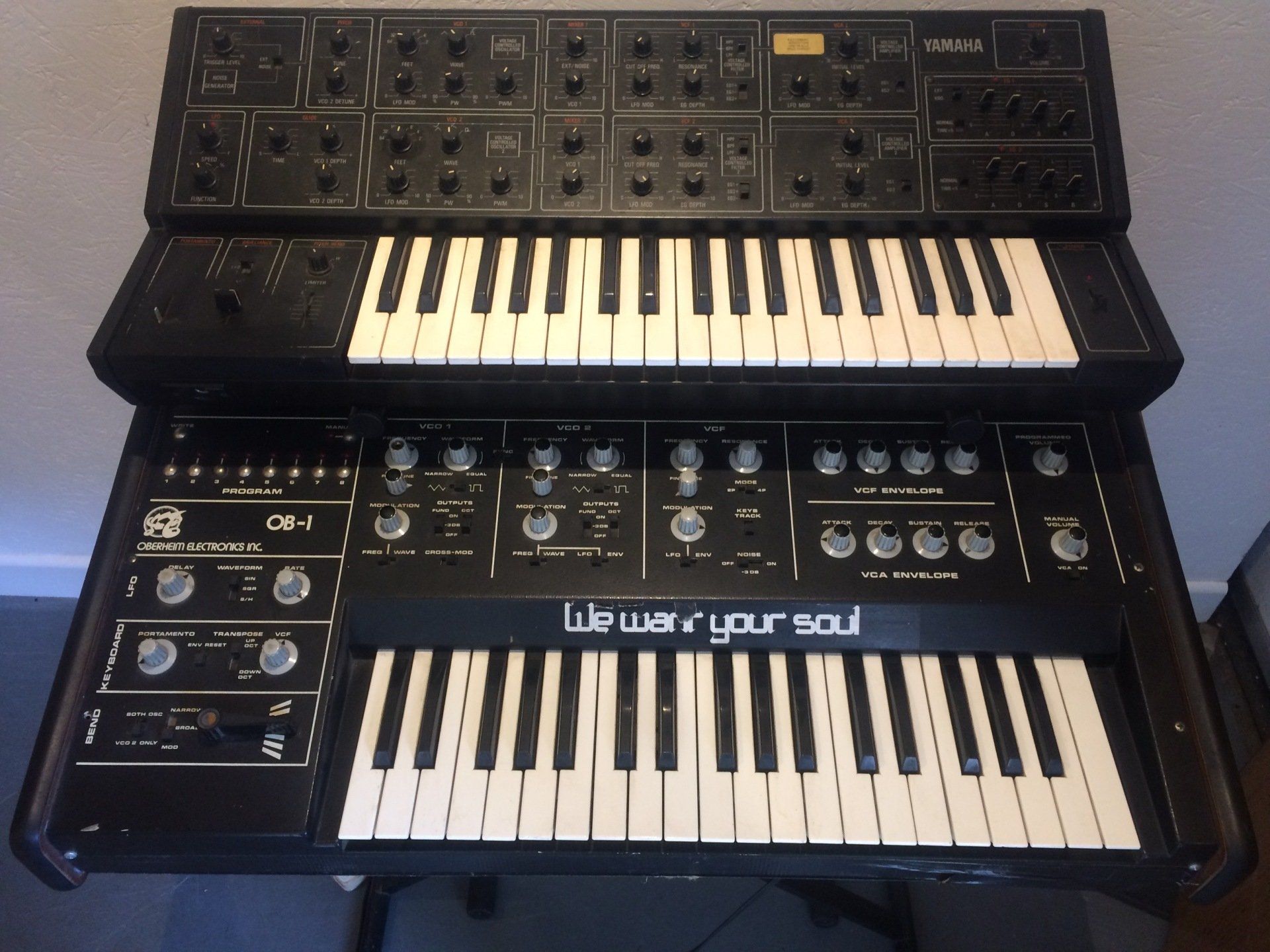
©️Mark Vickers June 2022
